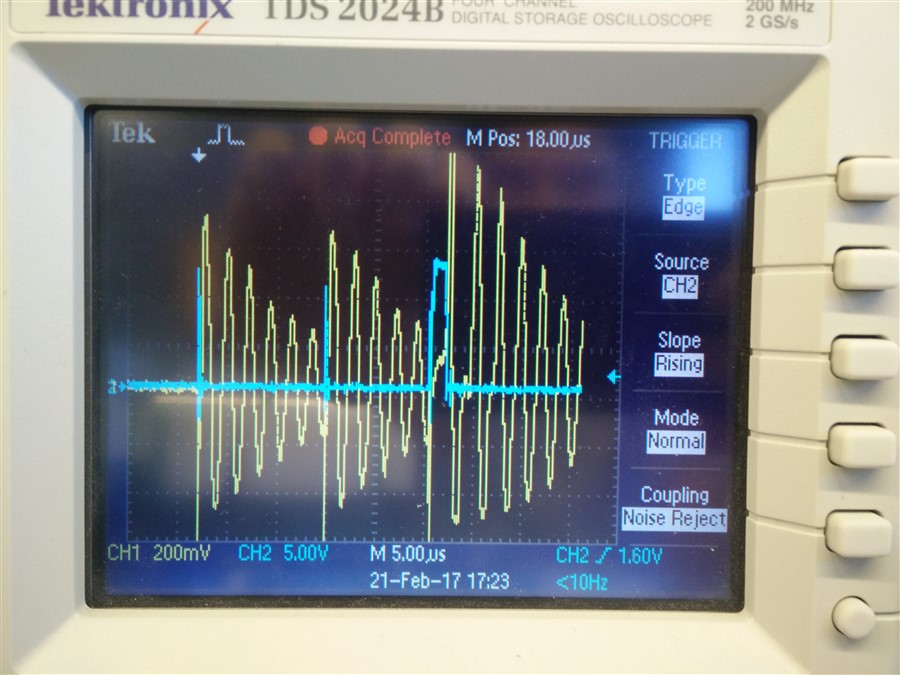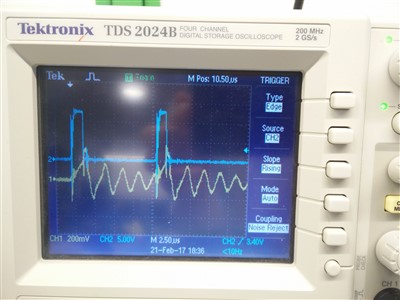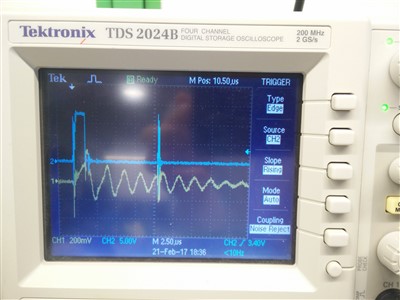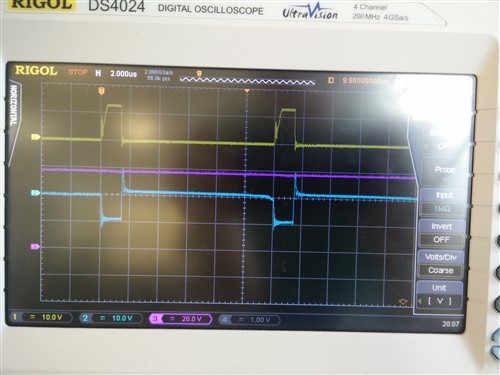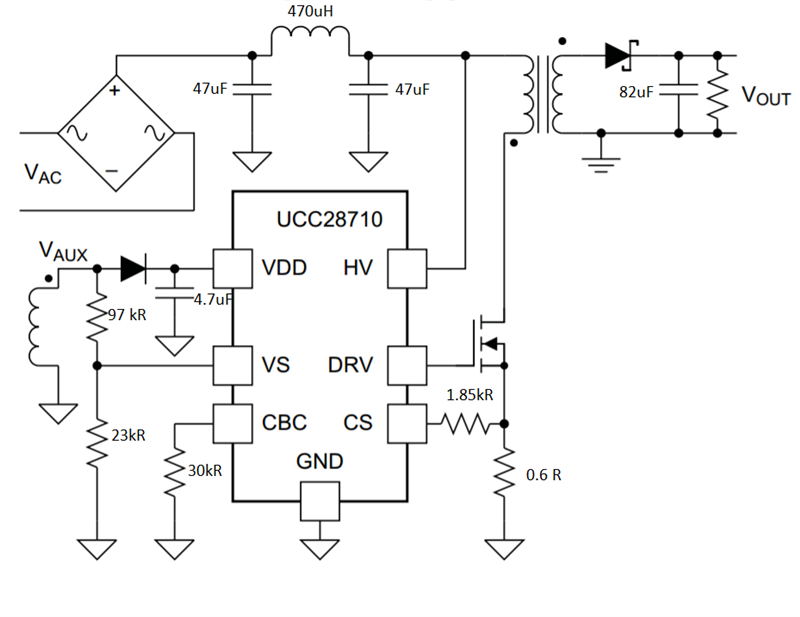Other Parts Discussed in Thread: TL431, UCC28710
Tool/software: WEBENCH® Design Tools
Good morning,
I need to do a AC/DC from AC line to 24V DC. I implemented the design from Webench directly changing some "custom made" components for some comercial ones (the transformer and the optocoupler). In the secondary side it is supposed to have 24V DC and I get only from 6 to 12V.
I have tried to the change the Rcs, the Rtl, etc. and still not finding a solution.
I attach the difference of the transformer custom made and the comercial:
| Parameter | Custom made | Commercial |
| Npri | 109 | 1 |
| Nsec | 22 | 0.188 |
| Naux | 17 | 0.156 |
| Lp | 1.57mH | 560 uH |
I attach too the schematic of the system:
I am testing without load, as I have seen in the datasheet that it would have the output voltage even thought there is no load.
I would be grateful if somebody could help me please.
Best regards to everyone,
Guifré
DTU student



